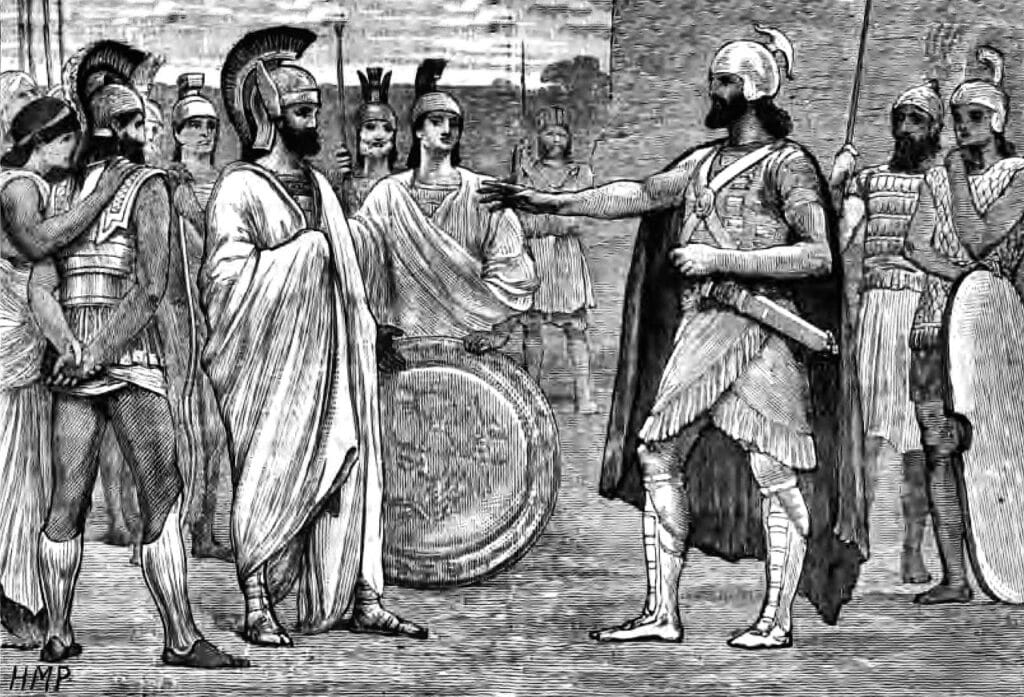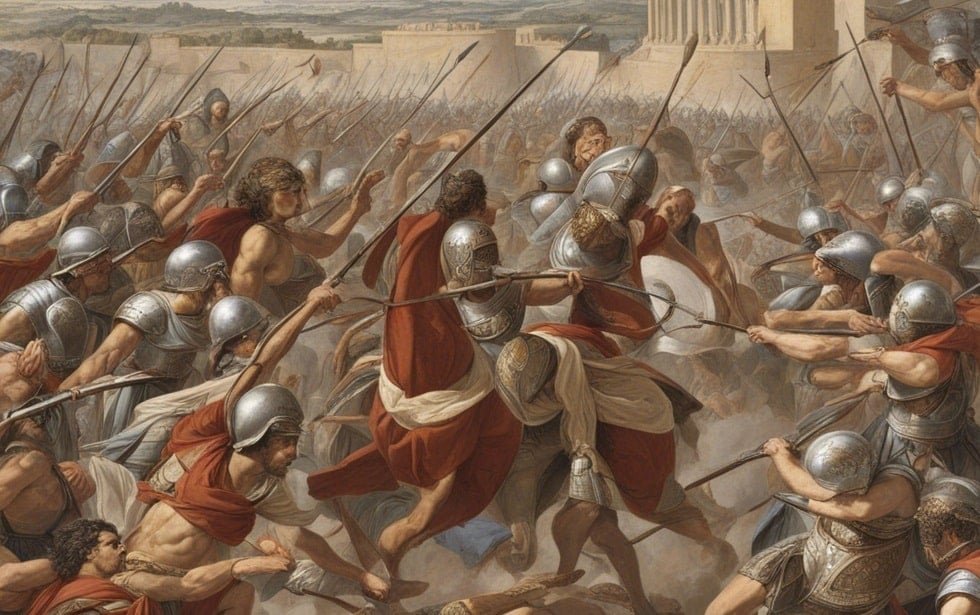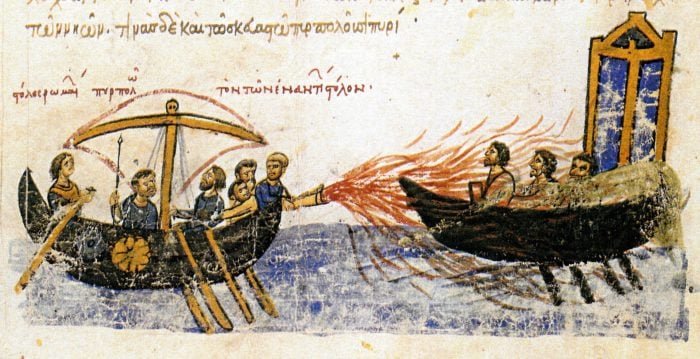
The clash between the Spartan army and the Thebans, led by their general Epaminondas, at the Battle of Leuctra in 371 BC signified the end of Sparta’s military dominance in ancient Greece and its gradual decline.
After winning the Peloponnesian Wars (431-404 BC) and forcing Athens to surrender, Sparta took over the Athenian Empire and kept all its tribute revenues, leaving nothing to its allies—Thebes, Corinth, and Argos—and others who contributed to the war. Furthermore, it forced its hegemony with arrogance and tyrannical rule.
In 398 BC, King of Sparta Agesilaus II asked Thebes, Athens, and Corinth to participate in a campaign in Ionia in the fight against the ruling Achaemenid Empire. The city-states refused to participate.
The Spartans campaigned alone. They managed to fight victoriously against the Persians in Lydia and advanced as far inland as Sardis. The Persians ordered the execution of satrap Tissaphernes for his failure to contain Agesilaus, and Tithraustes, his replacement, bribed the Spartans to move north into the satrapy of Pharnabazus II in the Hellespontine Phrygia. Agesilaus did so and simultaneously began forming a navy to fight at sea.
Sparta’s imperialism disgruntled its allies that soon revolted. In 395 BC, Thebes sent messengers to Athens asking for its participation in a coalition to fight against Spartan tyranny. Soon, Corinth and Argos joined the alliance, while Athens asked for the assistance of the Persian Achaemenid Empire.
In the same year, the Spartan army was still in Asia Minor campaigning against the Persians. Hence, it was the perfect time to revolt and begin the Corinthian War against the Spartans with the help of the Persians.
The Corinthian War
The war took place mainly on Corinthian land, with the Spartans managing to win several battles such as at Nemea and Coroneia. However, their attempt to build a strong navy failed, as the Persian fleet destroyed the Spartan ships at the naval Battle of Cnidus. This was the end of Sparta’s attempt to become a naval power.
Athens seized the opportunity and started several naval campaigns in the Aegean under Thrasybulus in an effort to recapture Greek islands that had been part of the Delian League but were conquered by the Persians in the 5th century BC. After they managed to regain some of the islands, the Persians responded by supporting the coalition. They switched sides by supporting the Spartans. Unable to fight against both powers, the allies were forced to seek peace.
Achaemenid King Artaxerxes II ordered the Peace of Antalcidas, also known as the King’s Peace on 387 BC, and the war ended. The peace was not good for the alliance as the treaty dictated that Persia would control all of Ionia and some of the Aegean islands. Furthermore, all other Greek cities would be “autonomous,” meaning they were not allowed to form leagues, alliances, or coalitions.
Sparta was appointed ruler of the Greek political system enforced by the Great King with the mandate to enforce the peace. The Spartans took advantage of the privilege and launched several campaigns against cities they perceived as threats.
In Thebes, in particular, the Spartans disbanded the Boeotian League and garrisoned all Boeotian cities, including Cadmea, the Acropolis of Thebes in 383 BC. Commander Phoebidas left a pro-Spartan oligarchy and a garrison to command Cadmea.
Thebes revolts
A group of Theban exiles led by Pelopidas liberated Cadmea with the help of Athens in 379 BC. Until then, Athens had followed a cautious policy but by 380 BC made a series of alliances with Chios, Byzantium, and Methymna on Lesbos. In 378 BC, the Theban revolt culminated in the Boeotian War. The Spartans under the command of Phoebidas marched towards Thebes to end the revolt. By then, Athens was on the side of the Thebans, and in the ensuing battle, Phoebidas was killed, and the Spartans retreated.
In 377 BC, the Spartans under Agesilaus attacked Thebes again using scorched earth tactics and contributing to a food shortage. However, that did not affect the Thebans. When Agesilaus fell ill, King Cleombrotus took over and led the campaign against Thebes. The Thebans decided to attack instead and recaptured all Spartan strongholds in Boeotia. This included the Spartan base in Thespiae. The Thebans continued southward, capturing Plataea.
By 371 BC, the newly established Theban democracy had elected four Boeotarchs, the traditional title of the Boeotian League, aiming at reviving the Boeotian League. A treaty was negotiated between Thebes and Sparta, but neither side agreed to the terms of the other. This led to the inevitable battle.
Epaminondas and the Battle of Leuctra
Spartan King Cleombrotus led his army from Phocis through the hills. When the men reached Leuctra, they were confronted by the Theban army. The six Boeotian generals were evenly divided on whether they would engage in battle. Epaminondas was in favor. When a seventh general who was in favor of battle at Leuctra arrived, it was decided they would fight then and there.
It was Epaminondas’ great strategy to break from tradition and mass his cavalry and a 50-deep column of Theban infantry on his left wing. He sent forward this mass of soldiers against the Spartan right. His weaker center and right wing columns were drawn up so that they were progressively further to the right and rear of the proceeding column in an Echelon formation.
The Theban center and right were held back, protected by skirmishers and cavalry. The infantry attacked, and the Thebans smashed the Spartan right wing. The Spartans’ 12-deep formation on their right wing could not withstand the heavy impact of their opponents’ 50-deep column. The Spartan right was hurled back with a loss of about a thousand men. Four hundred of these were some of Sparta’s most experienced soldiers even surpassing King Cleombrotus I. When the Peloponnesians saw their right wing collapse, they retreated.
Decline of the mighty Spartans
The blow to the Spartans was too heavy. Leuctra was a rare occasion when the mighty Spartan army was defeated in battle. The subsequent defeat in the Battle of Mantinea was the final blow to the military prowess of Sparta. It was the end of a long glorious era. A new power, known as Thebes, had emerged, and it had humiliated the Spartans in battle—twice.
By the 3rd century BC, the Spartan population had declined dramatically, and its economy was at its lowest because they no longer had the helots for agricultural production. Continuous warfare and strict citizenship requirements saw Sparta’s army dwindle, and its political state weakened.
In 222 BC, Spartan King Cleomenes III subjugated a number of Arcadian cities, forcing the reaction of several city-states. An alliance of the Boeotian League, the Achaean League, Acarnania, Epirus, and Macedon was formed to fight the Spartans.
The two armies met at Sellasia, north of Laconia, where Cleomenes was soundly defeated by the coalition under the command of Philopoemen. After Sellassia, Sparta continued its rapid decline in power, struggling to survive. In 146 BC, it was incorporated into the Roman Empire and ceased to be an independent entity.
According to Aristotle, the city “was destroyed because of shortage of manpower.” Plutarch wrote that out of the ten thousand Peloponnesians who fought at Leuctra, only seven hundred were Spartan citizens. What Aristotle meant was not that Sparta declined because it didn’t have enough hoplites to fight but simply that it did not have enough men to run the city-state.


